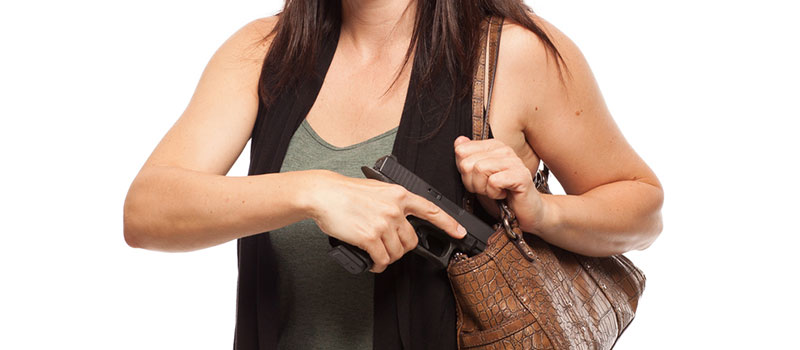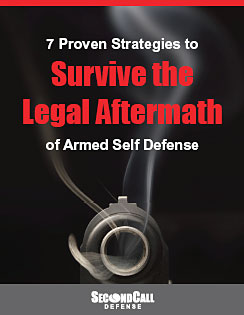3 Challenges of Off-Body Concealed Carry
by Trent Marsh
The most difficult decision most people face once they decide to start carrying, is how they are going to do so. Inside-the-waist, outside-the-waist, appendix, back, every carrying style has advantages and disadvantages, and varying levels of comfort. At times, none of these carry methods may be suitable.
While I have the advantage of being able to wear a nice suit to a dinner or holiday party, I’ve often heard female friends lament the lack of suitable carry option when the dress code requires a cocktail dress.
Enter off-body carry.
In the last decade, an entire industry segment has exploded with options for concealed carriers — primarily women — to protect themselves even when dress or comfort doesn’t make it easily accomplished. Often the solution is a purse or clutch specifically designed to provide a concealed, but easily-accessed, compartment for an every-day-carry handgun. I’ve also known men, who eschewed on-body carry, instead opting to carry in their briefcase or work bag.
While on its face, off-body carry seems like a perfect solution when traditional carrying practices aren’t convenient, off-body carry also presents new challenges for the armed citizen. Sadly, sometimes these challenges have tragic consequences.
The horrible incident involving Veronica Rutledge, 29, of Hayden, Idaho garnered nation attention. While in Wal-Mart, Veronica’s two-year-old son managed to unzipper the concealment compartment of her purse, and fatally wound his mother. Sadly, this isn’t the only such story.
When considering off-body carry, keep a few things in mind.
Access – The very nature of on-body carry limits the access of other people to your firearm. Placing the firearm anywhere that isn’t in direct contact with your person at all times opens the door to losing access or control of your firearm.
Reliability – When you carry in the same holster, in the same location, day after day, you can drill reaction and form to make yourself a better defensive handgun carrier. By placing the firearm off your body, you introduce an almost infinite number of variables of how to introduce the firearm to a defensive situation. Are you carrying it on your left shoulder? Is it under your arm? Did you set it down so you could put bags in the car?
Safety – The primary responsibility of any concealed carrier is safety. Traditional on-body carry observes the rules of basic firearm safety by keeping the weapon pointed in a safe direction at all times. If the firearm is carried horizontally in a bag, is it possible to ensure that the muzzle is always pointed in a safe direction?
In the tragic accident involving Veronica Rutledge, a failure to restrict access to the off-body carry location had lethal consequences. Sadly, she lost her life because the person that gained access to her firearm wasn’t capable of observing the basic firearm safety rule of keeping the barrel pointed in a safe direction.
On-body carry isn’t always comfortable or easy. I’m thankful every day, that as a man, I don’t face the challenges a more feminine wardrobe presents. I sympathize with other men who just can’t find the right holster/location combination to make carrying more comfortable (my own curvy figure presents similar problems). While off-body carry pre-dates the designer handbags currently in style, there are unique challenges to consider before deciding if it is a suitable option for you.
Trent Marsh is a husband, soon-to-be-father, and lifelong Hoosier. A marketing professional in the shooting sports industry, he also serves as the Gear Editor at WildIndiana.com and as a freelance writer for titles such as Whitetails Unlimited and Shooting Sports Retailer.
“


